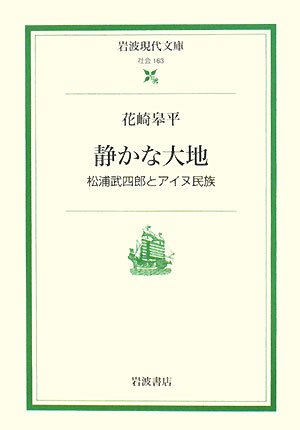1 0 0 0 無刀流開祖山岡鉄舟居士の剣道理念と真髄
- 著者
- 上山 智身
- 出版者
- 駒澤大学
- 雑誌
- 駒澤大学保健体育部研究紀要 (ISSN:03874036)
- 巻号頁・発行日
- vol.7, pp.44-60, 1985-03
1 0 0 0 OA EIS都市計画アプローチに基づく企業情報システム連携に対する一考察
- 著者
- 南波 幸雄 飯島 淳
- 雑誌
- 情報処理学会論文誌 (ISSN:18827764)
- 巻号頁・発行日
- vol.46, no.3, pp.662-670, 2005-03-15
ビジネス環境の拡大にともない,企業内ばかりでなく,企業間・地域間をまたいだ情報システムの連携が求められている.それに応じて企業情報システム(EIS)を支える情報インフラに対しても,統合・連携のためのフレームワークが求められている.本論文では,統合情報インフラを構成する,統合・連携のための機能連携要因について,EIS都市計画アプローチの視点から整理する.そして,それらの機能連携要因を形成する適用技術が,実際にどのように実装されているかを3つの事例に基づいて例示する.そのうえで,EISアーキテクチャの「ビューポイント」の概念を適用して,フレームワークの有用性について考察する.
1 0 0 0 OA 情報システム・アーキテクチャと再構築アプローチ
- 著者
- 南波 幸雄
- 出版者
- 一般社団法人 経営情報学会
- 雑誌
- 経営情報学会 全国研究発表大会要旨集 2005年度春季全国研究発表大会
- 巻号頁・発行日
- pp.63, 2005 (Released:2005-09-09)
企業情報システム(EIS)の再構築について,プロジェクト管理の視点からの報告は多いが,アーキテクチャの視点でのアプローチは少ない.本報告では,EISの再構築について,企業レベルのアーキテクチャをとらえる「EIS都市計画アプローチ」を適用し,その視点から考察する.具体的には,EISアーキテクチャを記述するための,「構造」,「部分と全体」,「内と外」の3つのビューポイントから,ERPの導入などのEIS再構築事例を分析し,移行計画としてのEISシナリオの適用性と考察し,その問題点と今後の方向性について検討する.
1 0 0 0 OA 鉄バクテリアの除鉄機構とその応用の紹介
- 著者
- 八木 正一
- 出版者
- Society of Environmental Conservation Engineering
- 雑誌
- 環境技術 (ISSN:03889459)
- 巻号頁・発行日
- vol.33, no.4, pp.278-283, 2004-04-20 (Released:2010-03-18)
- 参考文献数
- 15
- 被引用文献数
- 1 1
1 0 0 0 OA 日本書紀声点本の研究
1 0 0 0 静かな大地 : 松浦武四郎とアイヌ民族
1 0 0 0 アイヌ人物誌
- 著者
- 松浦武四郎原著 更科源蔵 吉田豊共訳
- 出版者
- 農山漁村文化協会
- 巻号頁・発行日
- 1981
1 0 0 0 天塩日誌 : 現代語版
- 著者
- 松浦武四郎著
- 出版者
- 北海道上川総合振興局
- 巻号頁・発行日
- 2018
1 0 0 0 アイヌ人物誌 : 松浦武四郎原著『近世蝦夷人物誌』
1 0 0 0 東西蝦夷山川地理取調紀行天鹽日誌 : 多氣志樓蔵版
1 0 0 0 IR 1990年代日本における入国管理政策と非行性の産出
- 著者
- 倉 真一 Shinichi KURA
- 雑誌
- 宮崎公立大学人文学部紀要 = Bulletin of Miyazaki Municipal University Faculty of Humanities
- 巻号頁・発行日
- vol.10, no.1, pp.67-87, 2003-03-20
本稿は1990年代の日本における入国(移民)管理政策を,「非行性」の産出という観点から概観したものである。最初に1990年代の入国管理政策を画した1989年と99年の二度の入管法改正をめぐって,前者においては非正規外国人の存在が争点であったこと。しかし非正規外国人という存在が入国管理政策によって作り出されているために,非正規外国人の排除という政策意図は失敗したことを確認した。後者においては非正規外国人による外国人犯罪が焦点となり,入国管理政策を正当化する論拠としての「治安対策」が浮上してきたことを確認した。ついで上記の正当化とそれを支える外国人犯罪の否定的イメージそのものが,実は非正規外国人に対する排除の「意図せざる結果」として形成されたことが明らかになった。「違法性」を纏った「法律違反者」である非正規外国人を,その違法性を理由に排除していく末に産み出されていくのが,「非行性」とその所持者としての「非行者」-すなわち「外国人犯罪者」のイメージなのである。要するにフーコーが「監獄の失敗」にみたように,入国管理制度は自分の存在する根拠(=非行性)を,自らの効果として産出するという自己準拠的な構造を有すといえるだろう。 1989年改正入管法の失敗にもかかわらず,あるいは失敗ゆえに99年改正入管法と現在の入国管理制度は存続の根拠(正当性)を「治安対策」として,自らの産み出した「非正規外国人」と「外国人犯罪者」のうえに求めることができるのである。
1 0 0 0 IR 改正入管法における留学生の在留資格と管理
- 著者
- 鷲尾 紀吉 Kiyoashi Washio 中央学院大学商学部
- 出版者
- 中央学院大学商学部
- 雑誌
- 中央学院大学商経論叢 = The Chuo-Gakuin University Review of Economics & Commerce (ISSN:09129820)
- 巻号頁・発行日
- vol.25, no.2, pp.155-163, 2011-03-01
1 0 0 0 北海道ウタリ生活実態調査報告
- 出版者
- 北海道民生部
- 巻号頁・発行日
- 1980
1 0 0 0 OA 韓国における鉄道貨物流動の地域構造
- 著者
- 韓 柱成
- 出版者
- THE TOHOKU GEOGRAPHICAL ASSOCIATION
- 雑誌
- 東北地理 (ISSN:03872777)
- 巻号頁・発行日
- vol.33, no.1, pp.22-34, 1981 (Released:2010-04-30)
- 参考文献数
- 24
In any economic structure of a region with regard to supply and demand, one of the important criteria is freight flow that exists between regions. It was ascertained that ton-km of freight flow by rail is the most important in Korea.In this thesis, an attempt is made to clarify the spatial pattern and to build traffic core regions. This is to clarify the characteristics of traffic core regions on freight flow by railroads in Korea.For this purpose the flow pattern of freight was analysed by the Q-mode and the R-mode factors. Traffic core regions determined by group average and multiple linkage analyses, and the character of the origin and destination were analysed.Flow data in this paper emanate from matrices produced by the Office of the Korean National Railroads contained in part in their publication estimates of Korean Inter-Zonal Freight Flow, 1977. Estimates were produced by total rail freight flow (tons) between 56 zones.Major findings are as follows:(1) Freight flow by origin and destination by rail determind 10 types of flow patterns. In addition, this flow structure was added to local and regional flows on the basis of national flow (double stucture).(2) In the traffic core regions that resulted by analysis of the flow pattern, there are 8 traffic core regions by outflow (Cheolam, Gohan, Dogye-Bugpyeong, Ssangryong-Jecheon, Daecheon, Yeosu-Hwasun, Mungyeong, Ulsan) and traffic core regions by inflow were builded 2 regions (Seoul, Busan).(3) Centralality was measured by eigenvalue and factor score, and the order of traffic core regions by outflow consisted of Ulsan, Gohan, Cheolam, Ssangryong-Jecheon, Mungyeong, Yeosu-Hwasun, Dogye-Bugpyeong and Daecheon. The order of traffic core regions by inflow consisted of Seoul and Busan.(4) The traffic core regions by outflow are constituted by regions producing underground resources and heavy-chemical manufacture. Traffic core regions by inflow are constituted by large consuming and developed areas of manufacturing. Finally it may be difficult to determine the factor of freight flow by rail; however, it is explained more or less by the relationship between underground resources, population and manufacturing in Korea.
1 0 0 0 IR 職業遂行の自由と営業の自由の概念 : ドイツ法を手がかりに
- 著者
- 赤坂 正浩 アカサカ マサヒロ Masahiro Akasaka
- 出版者
- 立教法学会
- 雑誌
- 立教法学 (ISSN:04851250)
- 巻号頁・発行日
- no.91, pp.142-119, 2015




